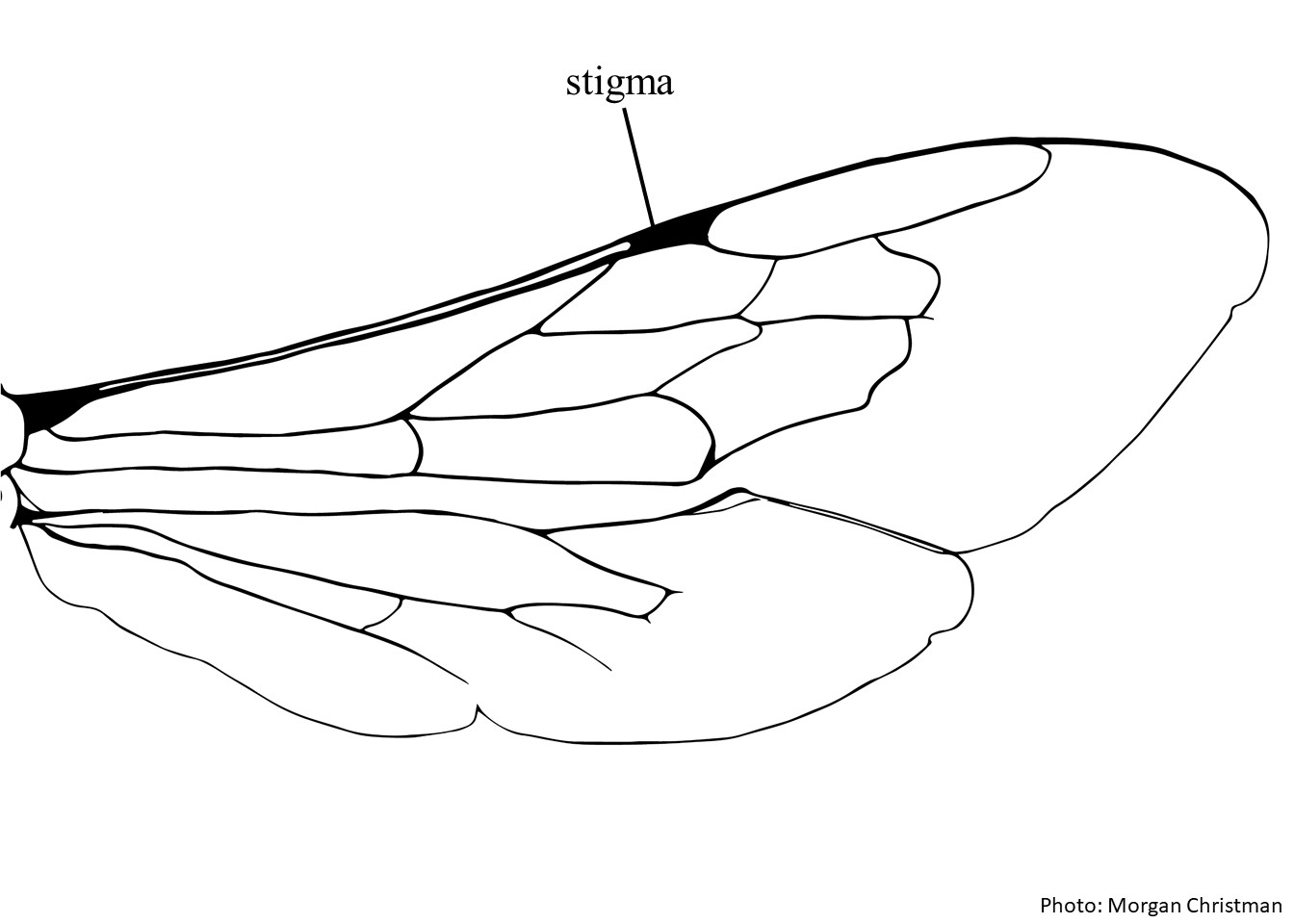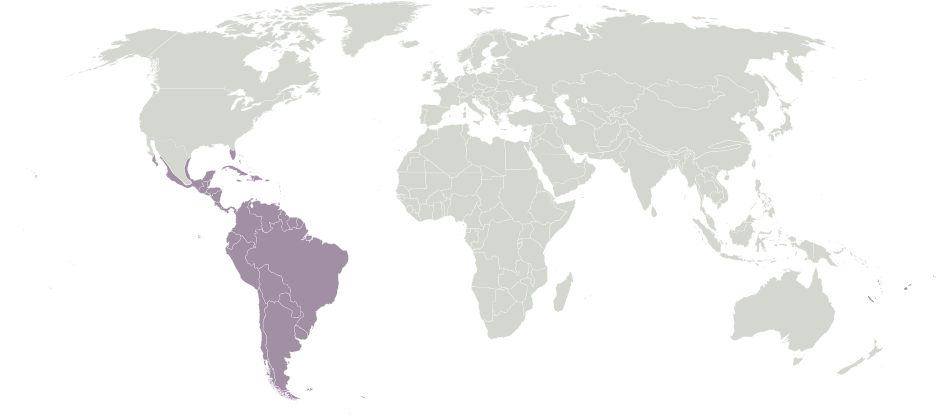Family: Megachilidae
Subfamily: Megachilinae
Tribe: Anthidiini
Genus: Duckeanthidium Moure and Hurd, 1960
Subgenera: none
Common name: none
Duckeanthidium are robust but slightly elongate bees that range in body length from 8.5–16.0 mm (Michener 2007Michener 2007:
Michener, C.D. 2007. The Bees of the World (2nd ed.). Johns Hopkins University Press, Baltimore and London, 953 pp.). Some have solid black integumentintegument:
a tough, protective outer layer
with limited yellow maculations, while others have abundant yellow maculations and a brown abdomen (Michener 2007Michener 2007:
Michener, C.D. 2007. The Bees of the World (2nd ed.). Johns Hopkins University Press, Baltimore and London, 953 pp.).
Duckeanthidium contains 8 species worldwide (Michener 2002Michener 2002:
Michener, C.D. 2002. Duckeanthidium , a genus new to Central America, with generic synonymy and a new species (Hymenoptera: Megachilidae). Journal of the Kansas Entomological Society 75: 233ndash;240.; Urban 2004Urban 2004:
Urban, D. 2004. Espeacute;cies novas e notas sobre Dianthidiini (Hymenoptera, Megachilidae) do Peru. Revista Brasileira de Entomologia 48: 347ndash;352.); none are known to occur in the U.S. or Canada.
(modified from Michener 2007Michener 2007:
Michener, C.D. 2007. The Bees of the World (2nd ed.). Johns Hopkins University Press, Baltimore and London, 953 pp.)
 small with the width across the costal margin subequalsubequal:
small with the width across the costal margin subequalsubequal: absent or reduced.
absent or reduced. and S6S6:
and S6S6: without laterallateral:
without laterallateral: extending posteriorly to widely separated laterallateral:
extending posteriorly to widely separated laterallateral: present.
present.Duckeanthidium may be confused with other large anthidiines, such as Epanthidium and Hypanthidioides, which have juxtantennal carinacarina:
a clearly defined ridge or keel, not necessarily high or acute; usually appears on bees as simply a raised line
and similar body coloration patterns. Duckeanthidium can be distinguished by the combination of characters above.
There are no known invasives.
Duckeanthidium thielei is believed to be a specialist on Bauhinia (Fabaceae, Caesalpinioideae) (Thiele 2002Thiele 2002:
Thiele, R. 2002. Nesting biology and seasonality of Duckeanthidium thielei Michener (Hymenoptera: Megachilidae), an oligolectic rainforest bee. Journal of the Kansas Entomological Society 75: 274ndash;282.). Little is known about the floral resources utilized by the remaining species of Duckeanthidium.
The nesting habits of most species of Duckeanthidium are unknown. Duckeanthidium thielei provision cells with dry pollen partitioning cells. They close their nests with a light-yellow resin that turns light cream-colored and becomes exceptionally hard (Thiele 2005Thiele 2005:
Thiele, R. 2005. Phenology and nest site preferences of wood-nesting bees in a Neotropical lowland rainforest. Studies on Neotropical Fauna and Environment 40: 39ndash;48.). Specializing in wet forest environments, nests are formed high in the canopy of live trees in holes in wood blocks (Thiele 2002Thiele 2002:
Thiele, R. 2002. Nesting biology and seasonality of Duckeanthidium thielei Michener (Hymenoptera: Megachilidae), an oligolectic rainforest bee. Journal of the Kansas Entomological Society 75: 274ndash;282.). Their nesting location in the canopy may be one reason that Duckeanthidium are uncommon in collections (Michener 2002Michener 2002:
Michener, C.D. 2002. Duckeanthidium , a genus new to Central America, with generic synonymy and a new species (Hymenoptera: Megachilidae). Journal of the Kansas Entomological Society 75: 233ndash;240.). Females seal themselves within nests overnight by temporarily capping nests with a soft resin-like material, which is removed before resuming diurnaldiurnal:
active only during daytime, as opposed to nocturnal
activity (Thiele 2005Thiele 2005:
Thiele, R. 2005. Phenology and nest site preferences of wood-nesting bees in a Neotropical lowland rainforest. Studies on Neotropical Fauna and Environment 40: 39ndash;48.).
Duckeanthidium is found in Central and South American tropical forests (Michener 2007Michener 2007:
Michener, C.D. 2007. The Bees of the World (2nd ed.). Johns Hopkins University Press, Baltimore and London, 953 pp.).
Distribution map generated by Discover Life -- click on map for details, credits, and terms of use.
 lowland rainforest. Studies on NeotropicalNeotropical:
lowland rainforest. Studies on NeotropicalNeotropical: Fauna and Environment 40:39-48.
Fauna and Environment 40:39-48.